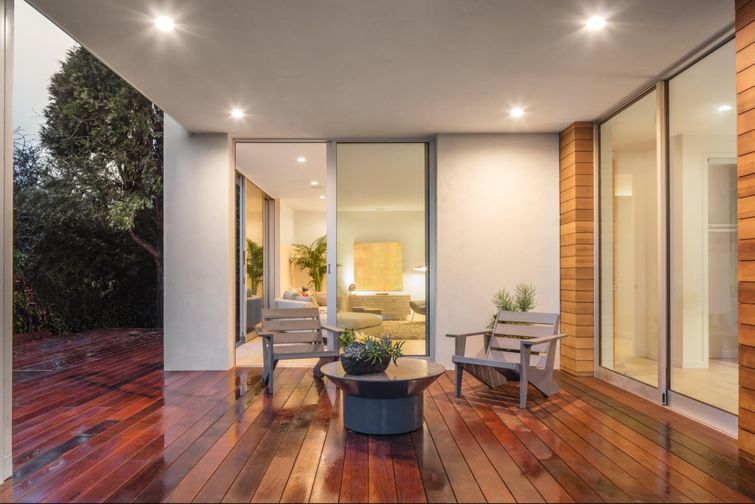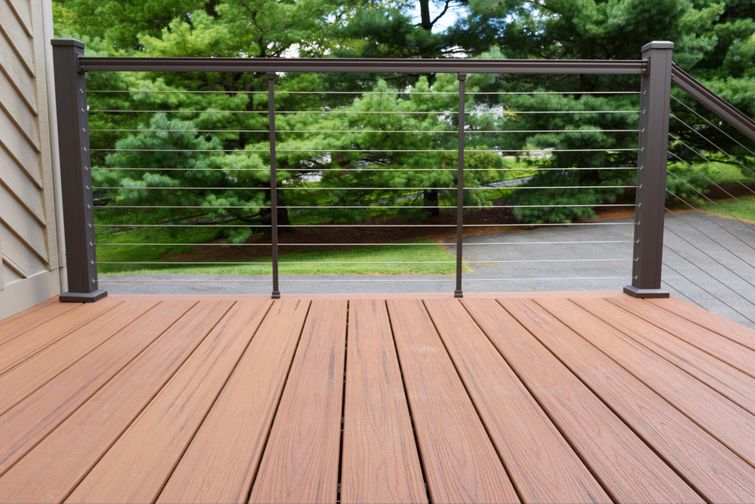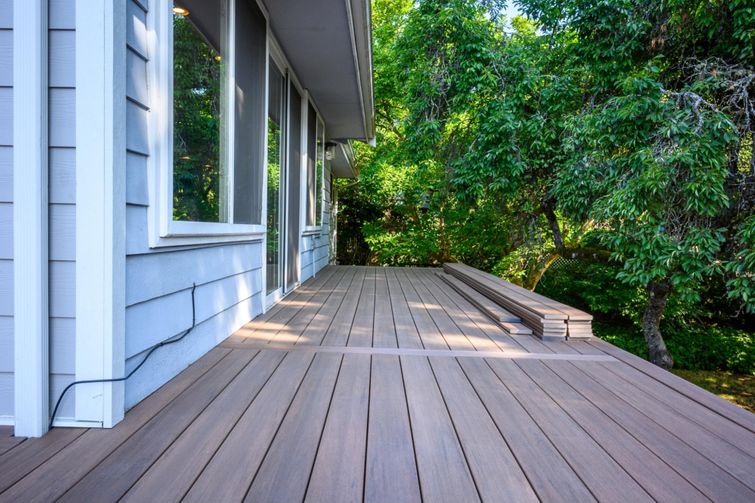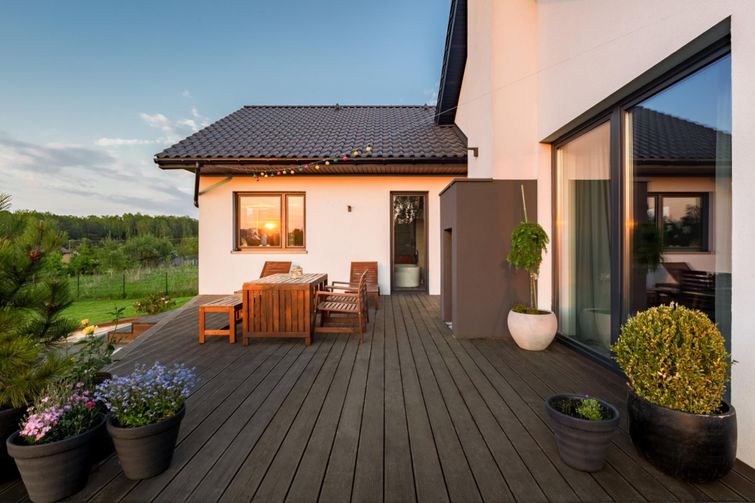Homeowners wanting to build or replace a deck for their home have many options to choose from when it comes to materials. No matter the size, height, or function you need from a new deck, many homeowners have had to be faced with the wood vs composite decking dilemma in their search for what is best for them. The composite vs wood deck cost debate is at the forefront of this dilemma.
With the popularity of composite decking rising in recent years, composite is still something that many do not know much about or what companies are the best. We have created this guide to help you compare the pros and cons between wood or composite in your search for the perfect material for your deck. Things like cost, quality, look, maintenance, and durability for your needs need to be considered as you are choosing between composite or wood.
In your search, and when stuck between wooden and composite deck boards and what is available on the market, it’s important to consider prices for your project, how many years it will last and how much work you want to put into it. We have collected and compiled the information needed to help you make a decision on what is most cost-effective for you.
Wood Decking

Traditional wood boards come in a variety of sizes, including more narrow or wider boards to suit your aesthetic needs. While any type of wood would technically work when building a wood deck, there are certainly some species that are better suited for outdoor usage as others would not hold up the same under weather conditions or are not cost-effective.
Pine, Redwood, Cedar, and pressure-treated wood or lumber are the most common choices when it comes to wood decking. Pressure-treated wood is one of the cheapest options but is saturated with chemicals to make it more weather resistant.
Redwood and cedarwood are both naturally resistant to weathering and insect damage and can last longer than chemically treated lumber. This can sound very ideal, but both can be most costly and hard to find depending on where you are located. Redwood is the sturdiest of the two, resulting in it costing more. Woods like Oak and Black Locust have been used more commonly, but the heavy cost for their average durability is not their best selling point.
Tropical hardwoods are also available and can be used for your deck. They are much harder than other domestic wood species like cedar or redwood and species like cumaru, tigerwood, and IPE is the most commonly seen for those who choose tropical hardwoods for their decks. IPE or Brazilian walnut are some of the easier-to-obtain species, and all are considerably more expensive and more structurally sound than domestic woods.
Maintenance

Benefits
Disadvantages
Cost
Composite Decking

Composite decking is available from many manufacturers and can come in multiple widths and styles for different fastening options. It is made from a mixture of wood flour (a recycled post-industrial material) and plastic fibres that are designed to resemble natural wood decking. What is exactly in the deck board varies based on the brand or company that manufactures it.
Composite deck boards come in two main forms but vast amounts of styles and colours. Capped composite deck boards have an added layer of protection made of PVC that acts as a shell to promote the longevity of the boards but it comes at a premium price compared to uncapped composite deck boards.
Maintenance
When it comes to maintenance and comparing composite vs wood, composites require much less effort and upkeep. They don’t require staining or sealant like natural wood decks require just the occasional clean that would be needed for any deck. Composite deck boards tend to have more texture on their surface and this can make them slightly harder to clean depending on the style you choose. Overall, they are not challenging to upkeep, are stain-resistant and can be easily rinsed with a hose or pressure washer.
A composite deck is more durable and weather-resistant than natural wood decks, so they don’t need to be replaced or repaired like wood that can warp and rot.
Benefits

There are many benefits to choosing composite decking for your new deck. Composite decks are made of more durable, stain-resistant and long-lasting materials that hold up well in harsh weather and against natural wear and tear for as many as 50 years as claimed by companies and manufacturers. The warranty for composite varies on brand and material makeup, but on average a composite deck can last you 20-30 years.
Composite decking is stronger and lighter than wood, making it easier to work with and comes in different styles for different installation methods. A composite deck can have built-in UV resistance to reduce the amount the boards would fade or lighten in the sun as much as natural wood does over time.
Composite deck materials can come in a vast variety of colours to fit any need you can have and composites are less maintenance to upkeep than wood.
Disadvantages
The primary disadvantage to composite decking in the wood vs composite decking dilemma is the higher initial price tag. However, when considering all the pros when comparing prices long term and considering the low maintenance fees and work, the durability, and the long-lasting warranty and nature of the material, the price of composite would be offset in time, saving you money long term.
In terms of looks when comparing wood vs composite, composite doesn’t have the same natural look that wood does. Some composite boards can closely resemble wood and achieve a faux natural look but it would cost you more to have that quality of composite boards. Some composite decks made from the lower price and quality composites can have a plastic-like sheen to them that can bother some and seem more inauthentic.
Cost

Composite decks cost on average, including installation and materials and features like railings, stairs and fasteners can come up to $30-$45 per square foot. The lowest cost is about $5 per square foot. The average cost for a composite is double the average cost of a natural wood deck and is one of the major factors to consider in the composite vs wood dilemma.
Is composite decking worth the cost? Composite saves you money in the long run when it comes to replacement, maintenance and repairs. It all depends on your wants and needs for your deck.
Which is Better, Composite Decking or Wood Decking?
When choosing the material for your project and considering all the pros and cons for wood or composite, it comes down to what you want and needs from your deck. Composite decking is easier to maintain while wooden decks are much more difficult to maintain but easier to repair. Wood composite requires more attention in comparison with things related to staining as it can fade in colour over time.
If you want to end your search with the natural and authentic look of real wood and the cost of maintenance of your time and money is no bother to you then wood is what you should purchase. But if you want low maintenance and can last you for years to come then composite decks are right for you.
Before you purchase your main material, don’t forget the costs of extra materials features like installed railing, stairs or fasteners.
Want to consult a professional company about building your deck? Call or contact us at Deckly, we can compare decking companies with you and help plan and build your new deck!

